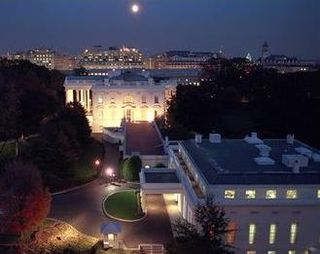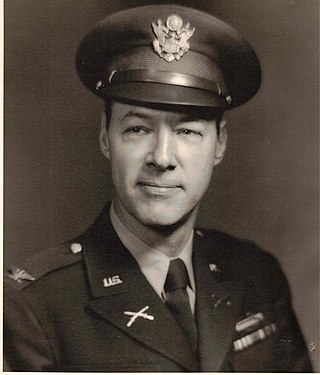
The Assistant to the President for National Security Affairs (APNSA), commonly referred to as the National Security Advisor (NSA), is a senior aide in the Executive Office of the President, based at the West Wing of the White House. The National Security Advisor serves as the principal advisor to the President of the United States on all national security issues.

The Executive Office of the President of the United States (EOP) comprises the offices and agencies that support the work of the president at the center of the executive branch of the United States federal government. The office consists of several offices and agencies, such as the White House Office (the staff working directly for and reporting to the president, including West Wing staff and the president's closest advisers), the National Security Council, and the Office of Management and Budget.

The White House chief of staff is the head of the Executive Office of the President of the United States and a cabinet position, in the federal government of the United States.

A secretary, administrative assistant, executive assistant, program assistant, project assistant, personal assistant, program support specialist, management analyst, or other similarly titled person is a person whose work consists of supporting management, including executives, using a variety of project management, program evaluation, communication, business management, public administration, and/or organizational skills within the area of administration. There is a diverse array of work experiences attainable within the administrative support field, in multiple sectors such as the private sector, public sector, and voluntary sector, ranging between internship, entry-level, associate, junior, mid-senior, and senior level pay bands with positions in nearly every industry, especially among white-collar careers.

The White House press secretary is a senior White House official whose primary responsibility is to act as spokesperson for the executive branch of the United States federal government, especially with regard to the president, senior aides and executives, as well as government policies.
Executive privilege is the right of the president of the United States and other members of the executive branch to maintain confidential communications under certain circumstances within the executive branch and to resist some subpoenas and other oversight by the legislative and judicial branches of government in pursuit of particular information or personnel relating to those confidential communications. The right comes into effect when revealing the information would impair governmental functions. Neither executive privilege nor the oversight power of Congress is explicitly mentioned in the United States Constitution. However, the Supreme Court of the United States has ruled that executive privilege and congressional oversight each are a consequence of the doctrine of the separation of powers, derived from the supremacy of each branch in its area of constitutional activity.

The West Wing of the White House houses the offices of the president of the United States. The West Wing contains the Oval Office, the Cabinet Room, the Situation Room, and the Roosevelt Room.

The White House counsel is a senior staff appointee of the president of the United States whose role is to advise the president on all legal issues concerning the president and their administration. The White House counsel also oversees the Office of White House Counsel, a team of lawyers and support staff who provide legal guidance for the president and the White House Office. At least when White House counsel is advising the president on legal matters pertaining to the duties or prerogatives of the president, this office is also called Counsel to the President.

The Presidential Communications Group, or simply the Communications Group, is the collective name for the offices within the Office of the President of the Philippines and refers to the position of the Secretary of Presidential Communications Office formerly known as Office of the Press Secretary and the Secretary of the Presidential Communications Operations Office (PCOO). The office of the presidential spokesperson was previously under the Communications Group.

The White House Office of the Executive Clerk is responsible for managing the original legal documents signed by the President of the United States which make up his official acts—these include public laws, vetoes, treaties, executive orders, signing statements, nominations, proclamations, commissions, pardons, and certificates of awards or medals. The office is further responsible for delivering any reports or messages the President wishes to send to the United States Congress. Formed in 1865, it is one of the oldest offices in the Executive Office of the President of the United States.

The White House chief usher is the head of household staff and operations at the White House, the official residence and principal workplace of the president of the United States of America. The position is currently held by Robert B. Downing.

White House Office is an entity within the Executive Office of the President of the United States (EOP). The White House Office is headed by the White House chief of staff, who is also the head of the Executive Office of the President. The staff work for and report directly to the president, including West Wing staff and the president's senior advisers. Almost all of the White House Office staff are political appointees of the president, do not require Senate confirmation and can be dismissed at the discretion of the president. Aside from Cabinet secretaries and Supreme Court justices, whose nominations require the approval of the Senate, the President of the United States has the authority to appoint people to high-level positions within the federal government unilaterally.

The Office of Presidential Correspondence is one of the largest and oldest offices in the White House, and is a component of the Office of the White House Staff Secretary. In the administration of Joe Biden, the Office of Presidential Correspondence was led by Director Eva Kemp. Kemp left the office in September 2021 to become Vice President at Precision Strategies. Deputy Director Garrett Lamm was promoted to take over for Kemp after her departure.
In the United States, a presidential transition is the process during which the president-elect of the United States prepares to take over the administration of the federal government of the United States from the incumbent president. Though planning for transition by a non-incumbent candidate can start at any time before a presidential election and in the days following, the transition formally starts when the General Services Administration (GSA) declares an “apparent winner” of the election, thereby releasing the funds appropriated by Congress for the transition, and continues until inauguration day, when the president-elect takes the oath of office, at which point the powers, immunities, and responsibilities of the presidency are legally transferred to the new president.

Paul “Pete” Thomas Carroll was a United States Army Brigadier General and White House Staff Secretary to President Dwight D. Eisenhower. During World War II, he served in combat and was awarded two Silver Stars and a Bronze Star for valor.
The Secretary to the President was a 19th- and early 20th-century White House position that carried out all the tasks now spread throughout the modern White House Office. The Secretary would act as a buffer between the president and the public, keeping the president's schedules and appointments, managing his correspondence, managing the staff, communicating to the press as well as being a close aide and advisor to the president in a manner that often required great skill and discretion. In terms of rank it is a precursor to the modern White House Chief of Staff.

The desk in the Vice President's Ceremonial Office in the Eisenhower Executive Office Building, colloquially known as the Theodore Roosevelt desk, is a large mahogany pedestal desk in the collection of the White House. It is the first of six desks that have been used by U.S. presidents in the Oval Office, and since 1961 has been the used as the desk of the U.S. Vice President.

The presidential transition of Richard Nixon began when he won the United States 1968 United States presidential election, becoming the president-elect, and ended when Nixon was inaugurated at noon EST on January 20, 1969. Nixon had become president-elect once the election results became clear on November 6, 1968, the day after the election. This was the first presidential transition to take place following the passage of the Presidential Transition Act of 1963.

The presidential transition of John F. Kennedy began when he won the 1960 United States presidential election, becoming the president-elect of the United States, and ended when Kennedy was inaugurated at noon EST on January 20, 1961.

The presidential transition of Dwight D. Eisenhower began when he won the United States 1952 United States presidential election, becoming the president-elect, and ended when Eisenhower was inaugurated at noon EST on January 20, 1953.
































